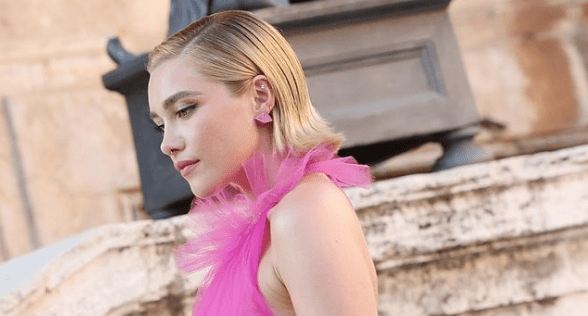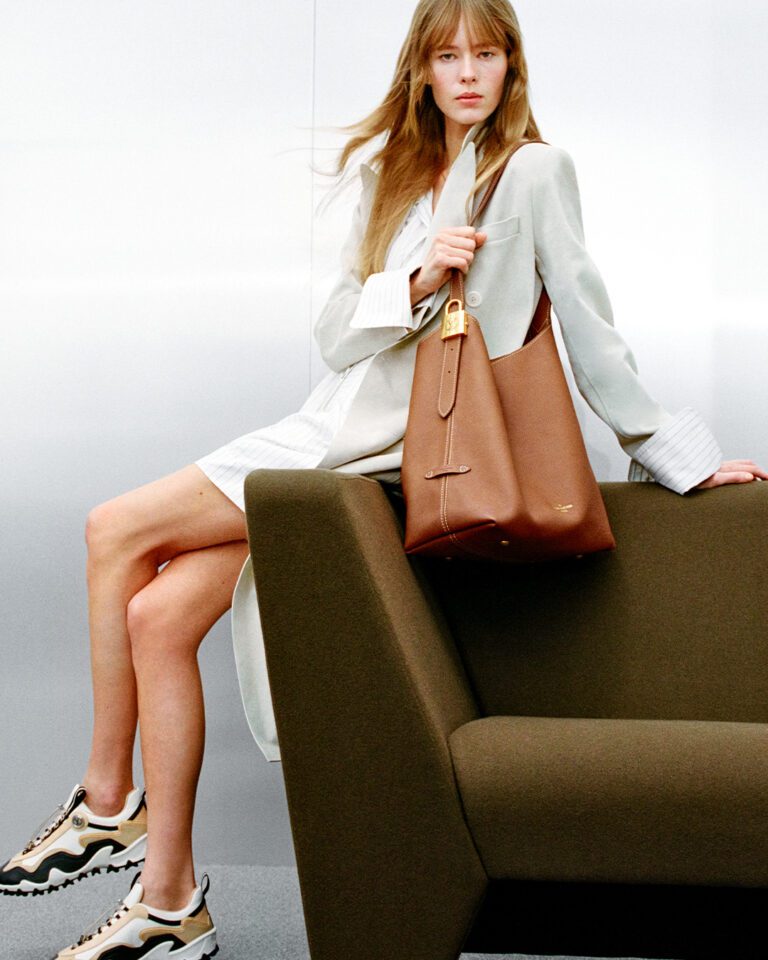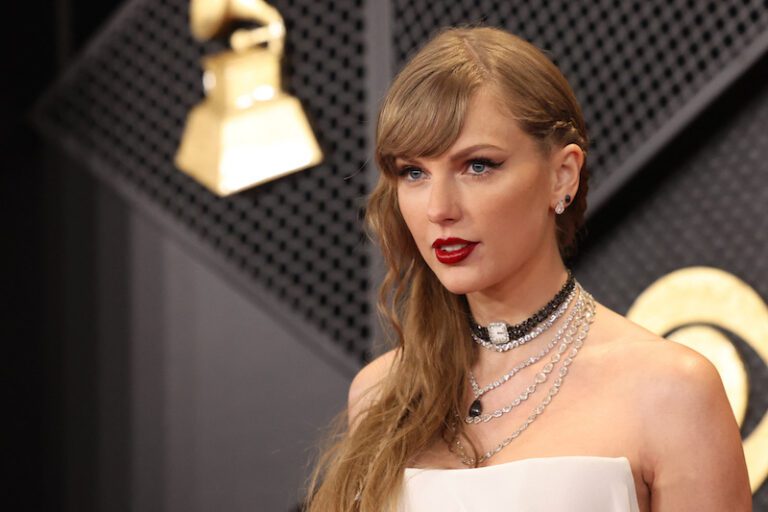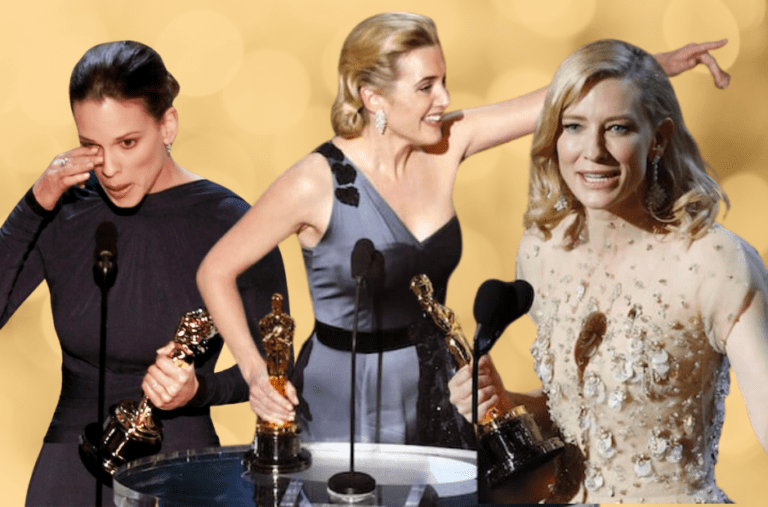Last Friday, actor Florence Pugh attended the Fall/Winter 2022 Valentino couture show in Rome. She wore a frothy pink gown that, being sheer, exposed her breasts. Posting photos of herself on Instagram looking radiant at the show, Pugh cheekily claimed of her nipples: “Technically they’re covered?”
The show itself, entitled The Beginning, was an exuberant celebration of the history and future of the Valentino brand. An assertively diverse catalogue of models traversed the Spanish Steps draped in flowing red silk, glittering silver sheaths and billowing pink feather capes.
As extravagant as the show was, it was the appearance of celebrity guests such as Pugh that captured the attention of the mainstream. Even those who have not seen images of the show have likely seen a photograph of Pugh, whose image quickly went viral.
Why is an image of a beautiful actor in a pink dress at a luxury fashion event in Rome causing such controversy? As Pugh herself puts it, it’s “all because of two cute little nipples…” In 2022, visible nipples on social media remain a point of contention.
Fashion statements
Celebrities frequently make statements with what they wear. Just two days before the Valentino show, all eyes were on Kim Kardashian at the Jean Paul Gaultier show in Paris, where she wore a replica of the iconic pinstriped dress famously worn by Madonna to the 1992 American Foundation for AIDS Research (amFAR) Gala.
Yet, rather than being breast-baring like Madonna’s famous look, the gown was a modest version, with the bust cups in-filled with nude fabric. On Kardashian, the radical political statement made by Madonna thirty years ago somehow felt kitsch and staid.
The pink confection Pugh wore in Rome, defiantly feminine in its colour and silhouette, was not a statement in itself. It was not until she posted the images on Instagram that it became a lightning rod. Even then, it was not the dress that was the statement, it was what the dress revealed.
Instagram and #freethenipple
Upon posting, Pugh immediately became the recipient of two different responses. There were those who, in opposition to Instagram’s famously strict no female nipples policy, were quick to comment on the beauty of Pugh’s look and to praise her for eschewing long outdated policing of women’s bodies. And then there was the influx of toxic comments on Pugh’s body.
Pugh has since uploaded a second post, in which she responds to the misogynistic comments she received on the initial post. In the caption Pugh provokes: “Why are you so scared of breasts?” She directed this question to the swathe of men who posted negative comments about her body, but it could equally be directed at Instagram’s controversial content moderation practices.
The caption not only draws attention to how “easy it is for men to totally destroy a woman’s body, publicly, proudly, for everyone to see…” but also how the mechanisms of social media contribute to unrealistic beauty standards. It is precisely these expectations Pugh rejects, proudly proclaiming: “It has always been my mission in this industry to say “f*** it and f*** that” whenever anyone expects my body to morph into an opinion of what’s hot or sexually attractive.”
Pugh isn’t the first celebrity to make a political statement about the experience of misogyny online and the ways that women’s bodies and self expression through nudity is disproportionately policed. In 2015, Naomi Campbell’s contribution to the digital #freethenipple campaign was removed for violating Instagram’s Terms of Use. Since then, Miley Cyrus, Lena Dunham and Cara Delevingne have all made their own claims to Free the Nipple.
However, despite the longstanding campaign to change attitudes toward women’s bodies, Instagram’s community guidelines continue to penalise femme-presenting nipples.
Doubling down on double standards
At present, Pugh’s post is still on Instagram. This is positive and suggests the dial may be shifting slightly. However, Pugh is young, white, cis-gendered and conventionally attractive. She is a successful movie star with vast quantities of cultural capital. Many Instagram users who do not fit into these categories would likely have an equivalent photograph quickly removed.
In 2020, Instagram’s nudity policy came under fire when an image of model Nyome Nicholas-Williams, semi-nude and with her arms wrapped around her breasts, was repeatedly removed. The take down of the photo reignited claims of racial bias and fat-phobia in Instagram’s content moderation processes.
Notably, the photograph did not show any nipples, but fell foul of an Instagram policy prohibiting images depicting “breast squeezing”. This was called out for penalising fat and plus-sized users by not taking into account how those with larger breasts are able to hold themselves. Instagram has since attempted to improve its policy on this specific type of nudity to allow for breast “holding” or “cupping.”
Due to a lack of transparency in content moderation practices, research into the impacts and potential biases of content governance on Instagram remains a challenge.
Some community-based research suggests that the removal of posts on Instagram disproportionately targets women, people of colour, plus-sized users, and members of LGBTIQ communities. The harmful impact on sex workers, even when not posting in capacity as a sex worker, has also been documented.
Yet other research also found images of “underweight” women to be removed from Instagram at a higher rate, suggesting that while content moderation is applied inconsistently across body types, a perceived bias towards thin women may be overstated.
Political fashion
Displaying breasts on the catwalk is far from noteworthy. Indeed, several models walking at the Valentino show wore sheer garments through which their breasts could be seen. It was in Pugh’s Instagram post that the knowing political statement was made. As she notes in the caption of her second post: “we all knew what we were doing.”
Regulation of bodily autonomy has, of course, become a particularly volatile issue in recent weeks, since the overturning of Roe vs. Wade. The policing of bodies online can be seen as a mirror of more dangerous policing offline.
While Instagram’s guidelines state that in some cases photographs of “female nipples” are allowed “as an act of protest,” in such an environment, it’s hard to see how any image of women’s breasts can be anything other than an act of protest.
That a post such as this could elicit such vehement responses surely tells us it is high time we #freethenipple.
About the author
Harriette Richards is a Lecturer, Fashion Enterprise at RMIT University







